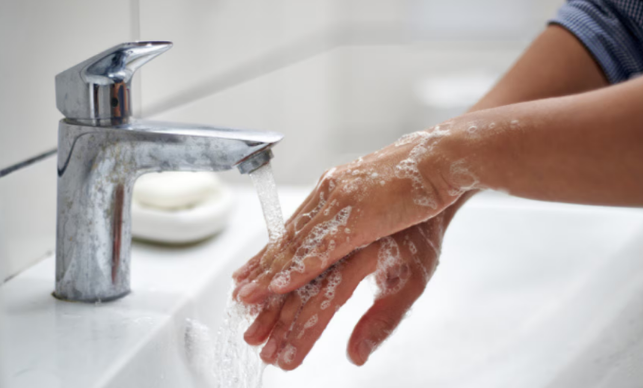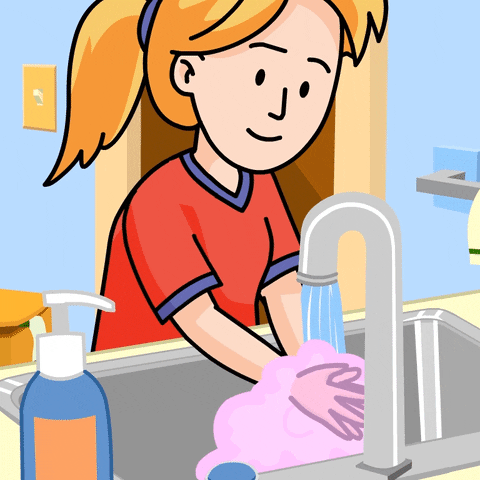
How Clean Hands Save Lives
Imagine a bustling hospital in Rome, where healthcare workers tirelessly care for patients. Now, imagine this: a single unwashed hand can carry enough bacteria to put lives at risk. According to a recent study conducted at one of Italy’s largest university hospitals, gaps in healthcare workers’ hand hygiene knowledge and practices could be contributing to the persistence of healthcare-associated infections (HAIs)—a problem that affects one in 15 patients in the EU each year.
HAIs, which result in prolonged hospital stays, increased medical costs, and, tragically, preventable deaths, can be reduced by up to 70% when effective hand hygiene practices are combined with other preventive measures. Yet, even in hospitals with established training programs, knowledge gaps remain. This blog delves into the findings of the study and their implications for public health, healthcare workers, and patient safety.
The Research: A Snapshot
Researchers at the Fondazione Policlinico Universitario Agostino Gemelli in Rome surveyed 542 healthcare workers (HCWs)—including doctors, nurses, and auxiliary staff—to assess their knowledge of hand hygiene practices. The survey, based on the World Health Organization’s (WHO) Hand Hygiene Knowledge Questionnaire, revealed an average knowledge score of 74%.
While this score might sound promising, certain gaps were startling:
- Hand Rubbing vs. Washing: Many HCWs were unsure whether alcohol-based hand rubs are more effective than soap and water.
- After-Contact Sanitation: Only some staff recognized the importance of sanitizing hands after touching a patient’s surroundings, such as their bed or IV stand.
- Specific Situations: There was limited knowledge about using soap and water after exposure to Clostridioides difficile, a bacterium linked to severe gastrointestinal infections.
The study also found that professional qualifications, recent training, and length of service were significant predictors of knowledge. For instance, nurses consistently outperformed other groups, and staff who had undergone hand hygiene training within the last three years demonstrated better understanding of critical practices.

Why This Matters: The Bigger Picture
Hand hygiene is more than a routine task—it’s a lifesaving intervention. The WHO considers hand hygiene compliance of 80% or higher a benchmark for reducing HAIs, yet many hospitals struggle to maintain this standard.
Here’s why this issue demands urgent attention:
- The Human Toll: HAIs affect millions of patients annually, leading to preventable deaths and prolonged suffering.
- Economic Impact: Treating HAIs increases healthcare costs, placing strain on already overburdened systems.
- Global Relevance: As the COVID-19 pandemic highlighted, infection control is a cornerstone of public health.
The study in Rome underscores a critical point: knowledge gaps can undermine even the most well-intentioned infection control efforts. To bridge these gaps, healthcare organizations must invest in continuous education and innovative training methods.
Bringing the Findings to Life
Picture this scenario: A nurse named Maria starts her shift at the hospital. She’s trained, experienced, and committed to patient safety. However, she doesn’t sanitize her hands after adjusting a patient’s bedside table—a seemingly small oversight that could have devastating consequences.
Now imagine Maria attended a hands-on workshop that highlighted the “5 Moments for Hand Hygiene” identified by the WHO. Through interactive exercises and real-time feedback, she learns to recognize high-risk situations she previously overlooked. Empowered with this knowledge, Maria becomes a role model for her peers, spreading awareness and improving compliance across her unit.
This is the ripple effect of targeted education. By addressing specific weaknesses, hospitals can transform hand hygiene practices from routine habits into conscious, effective actions.
Lessons for Public Health
The Rome study offers valuable lessons for public health practitioners and policymakers:
- Tailored Training Matters: Training programs should address knowledge gaps specific to different professional roles. For example, auxiliary staff may need targeted education on after-contact sanitation, while senior doctors could benefit from updated guidelines on alcohol-based rubs.
- Promote Peer Learning: Experienced staff can act as mentors, fostering a culture of shared responsibility for infection control.
- Invest in Monitoring: Continuous observation and feedback ensure that training translates into practice.
What’s Next?
The study raises important questions for future research and practice:
- How can training programs be adapted to better engage HCWs with diverse educational backgrounds?
- What role do behavioral barriers, such as overconfidence or time constraints, play in non-compliance?
- Could emerging technologies like wearable sensors or AI-powered reminders improve adherence to hand hygiene protocols?
Future studies could also explore the long-term impact of training on HAI rates, providing evidence for scaling up successful interventions.
Join the Conversation
Hand hygiene may seem simple, but its implications are profound. Let’s work together to close knowledge gaps and protect patients. What’s your experience with infection control in healthcare settings? Have you seen innovative approaches to hand hygiene education? How do you think we can balance the demands of healthcare work with the need for strict hygiene compliance?
Share your thoughts in the comments or join the discussion on social media using #HandHygieneMatters. Let’s keep the conversation going and inspire action for safer, healthier communities.
Don’t Miss Out – Subscribe Now!
Public health needs your voice today. Join thousands of leaders already making a difference. Subscribe for free to This Week in Public Health and receive weekly updates packed with tools to drive change.
🚨 Urgency matters—take action now and share this blog to expand our reach!



